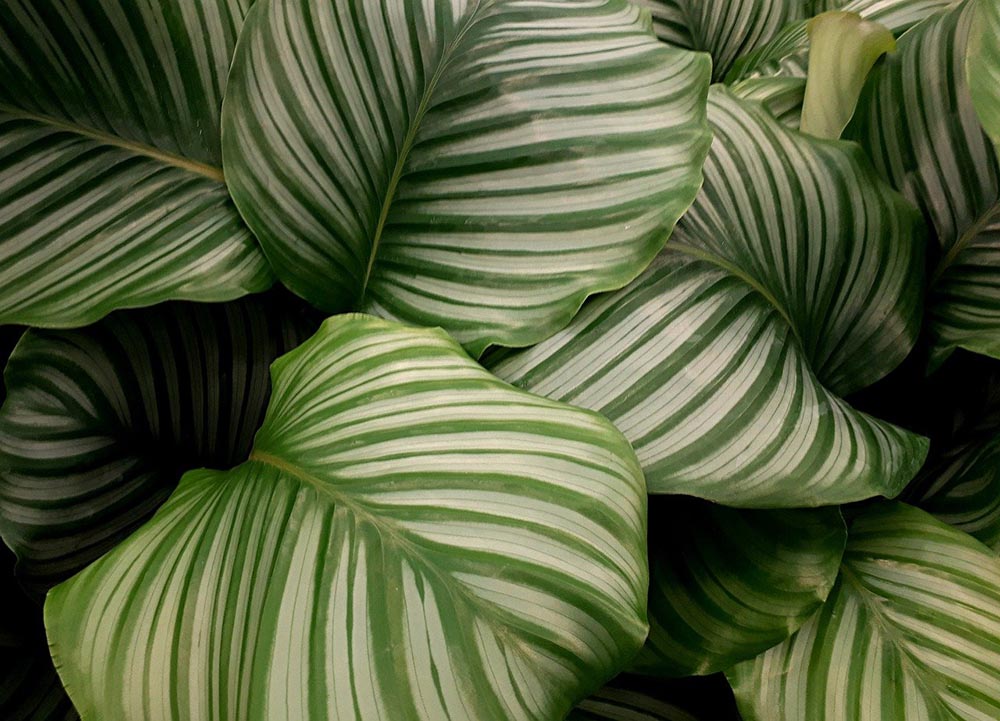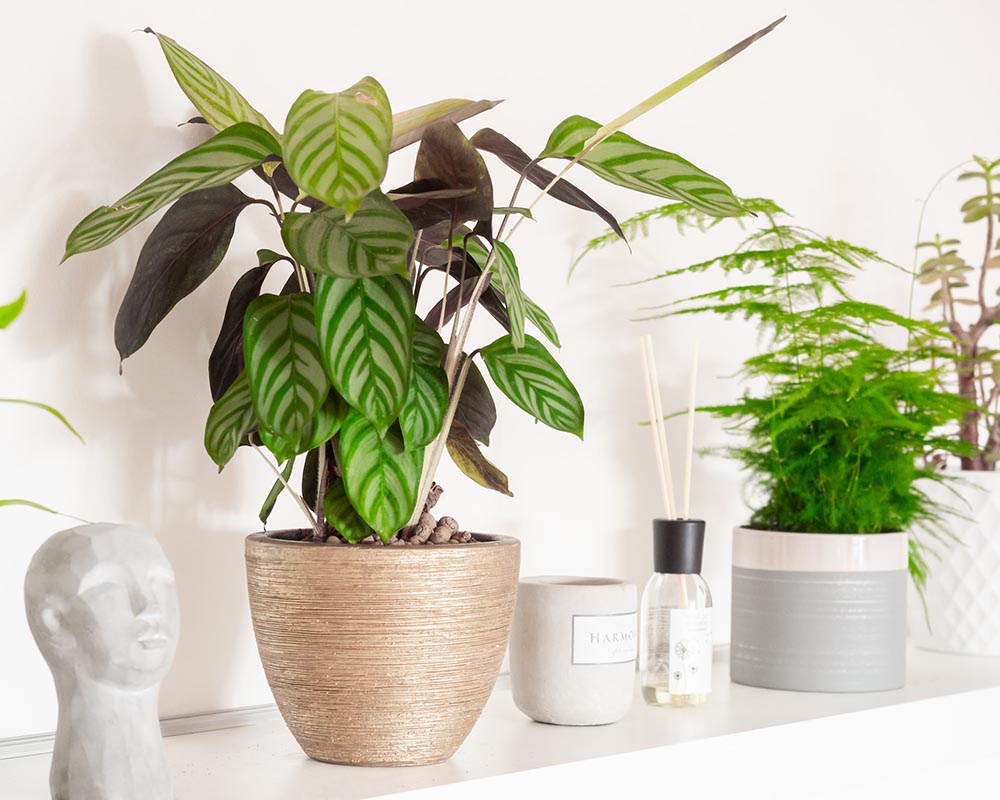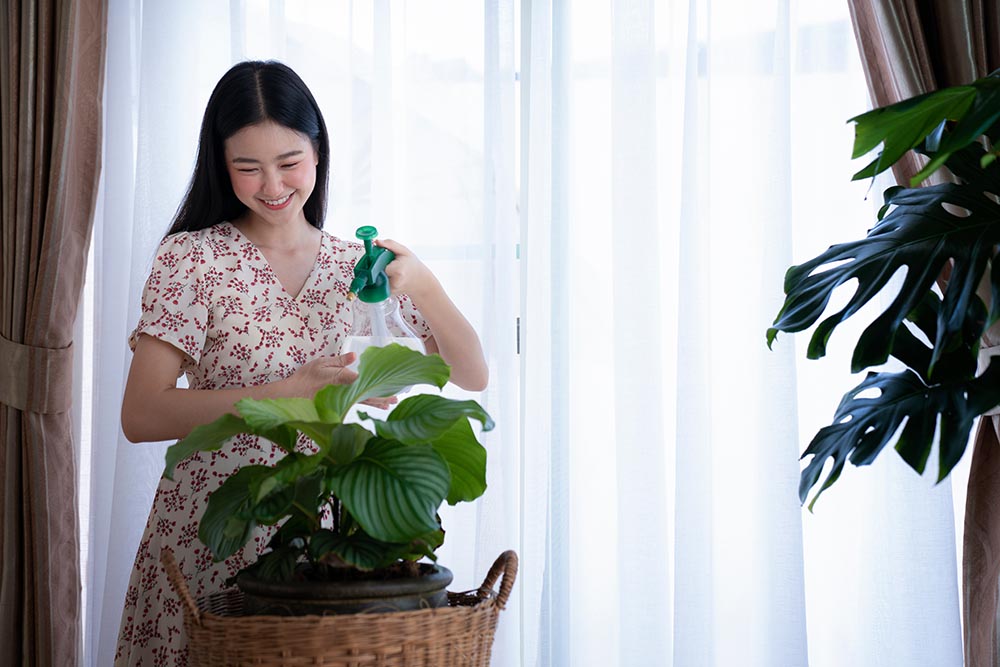How Much & How Often to Water Calathea: Signs & Factors
-
Pete Ortiz
- Last updated:

Calatheas are beautiful, bright green tropical plants that originate from the warm climates of South America. They are mostly planted indoors for decoration purposes. In its natural habitat, calathea would be constantly surrounded by moisture in the air and ground. Thus, you will want to replicate these conditions by ensuring it gets consistent moisture and humidity to thrive. So, if you’re thinking of adding a calathea to your home, it’s important to know how much and how often to water it to keep it healthy and happy.
This article looks at the conducive environment for calathea to grow and how to water the plants. Keep reading for deeper insight.
Watering Schedule for Calathea
There are different types of Calathea. However, they all have similar water requirements. Proper watering is key to ensuring they grow strong and flower.
The plants require regular watering to ensure the soil doesn’t dry out. However, to control root rot, you should allow the soil to dry about 2 inches between each watering. So, you need to check the soil condition frequently to know when the right time is to water.
The amount and frequency of watering depend on several factors, which we will discuss in the following section. But overall, the location is one of the great determinants of plant health. You will need to water your calathea more if you live in a drier and warmer climate, and even more so when the plants are growing and flowering.
When you mist and keep the plants near a small humidifier, you only need to water them every 1–2 weeks. If they are in a dry environment, you should water them after every few days. Allow the soil to dry out slightly to prevent root rot. However, ensure that the soil stays damp below the first 2 inches.

Factors Affecting Calathea Watering Schedule
- Sunlight Level – If your plants get lots of light, it means it has more photosynthesis taking place, thus more growth. This translates to more water needed for the plant to perform these processes. On the other hand, if they grow in a darker room or receive less sunlight, their growth slows and requires less water.
- Humidity – Calathea does well in a high humid environment. If the humidity in your home is low, the leaves can get dry as well. So, you will need to raise the humidity levels by watering. In winter, you require a humidifier to boost the humidity.
- Temperature – Calathea plants are sensitive to low temperatures. They don’t like it when the air or water is too cold. Their growth slows when the temperatures go below 60° When in the dormancy phase, they will require little water.
- Soil Mix – The soil you plant Calathea also determines how frequently you should water your plants. Soil featuring high perlite and sand concentration drains more, so more water is needed. Soil containing a lot of organic matter holds moisture for a long time, so less watering is required. This simply means that if the soil dries quickly, you should water them more. On the other hand, if the soil doesn’t lose water quickly, water when the first 2 inches dry out.
- Pot Type – The type of container you plant your calathea in determines how often you should water it. A container or pot with terra cotta, clay, or wood wick drains faster. While this helps prevent overwatering or having standing water in the pot, you will need to add water more often. Non-porous materials include glazed clay and plastic. These materials retain moisture, so your plant will do well in the pot without frequent watering. However, ensure your pot has at least a few drainage holes at the bottom.
How Much Water Is Needed?
Smaller calathea plants in 3–4-inch containers require about 8 ounces to saturate the soil mix. Large plants measuring 2 feet in height require about a quart or more water. The most critical thing is to ensure there is no standing water.

How to Water Calathea
The way you water your plants determines how well they thrive. Good drainage is necessary to prevent root rot caused by standing water. Poor drainage causes poor health and can also attract diseases and pests. Here are ways to water your calathea plants:
Top-Down Watering
This method involves pouring the water around the base of your plant’s stems. Avoid splashing the leaves and ensure the entire soil around the pot is soaked.
Bottom Watering
Bottom watering involves putting the calathea plant container into another bigger container with water. Allow the plant to soak up until the topsoil gets damp. Then, allow it to drain in a sink until there is no more dripping.
The 5 Signs You Need to Water Your Calathea
1. Dry Soil
If you see the soil drying out, it’s an indication that the water has drained out and you need to add more before the plants start to dry. Don’t wait for the potting mix to dry completely and turn into a solid cake. Water when the soil gets dry at the top of the pot but still wet near the roots.
2. Drooping Stems
When the water levels run low, your plants start to slump. This happens because the ability to stand upright is determined by the amount of fluid in their cells. Thus, when you find the stems drooping, you should water them.
3. Curling Edges
When calathea leaves get dehydrated, they start to curl inward as a defense mechanism to reduce further water loss. Curling of the leaves can also be caused by dry air. Thus, it’s also good to check the ambient humidity using a hygrometer. If the ambient humidity is below 50%, the curling may be caused by low humidity and not underwater. However, if the humidity is just right, then the curling is an indication that the plant needs more water.
4. Leaves Failing to Rise at Night
Healthy calathea leaves raise their leaves at night and unfold them in the morning. With no water to spare, the daily movements fail to happen due to weakened joints below the leaves.
However, you shouldn’t worry if only one or two leaves fail to rise. This can be caused by individual leaf aging. Also, lack of enough or excess light can make the leaves fail to rise at night. So, before you add more water to your plants, ensure these two reasons are not the cause.
5. Browning or Yellowing Foliage
Calathea leaves can be discolored for many reasons, but they all come down to insufficient moisture reaching the leaves. Underwatering makes the roots malfunction, meaning no water moves to the entire plant. On the other hand, with excess moisture in the soil, leaf discoloration may be caused by root rot.
Signs of Overwatered or Underwatered Calathea Plant
Signs your plants are oversaturated with water include drooping stems, yellowing leaves, soft and translucent leaves, fading patterns and colors, and discolored roots. If your soil is oversaturated, repot it into another dry pot with the right drainage.
On the other hand, signs of underwatering your plants include the already mentioned tell-tale signs of the plant needing water. These include wilting and drooping, brown tips, crispy leaves, loss of brightness, and brown tips.
Conclusion
Calathea is a great plant that livens your home or office space. Like other plants, you should water it often to make it grow strong and bloom. Since the plants do well in wet soil, ensure the soil never dries out. On the other hand, don’t allow excess water in the soil, which may cause root rot.
Some signs that show your plants need water include drooping stems, curling edges, or yellowing foliage, but you don’t have to wait until you see these signs to water them. During the warm weather conditions, water them weekly. When it’s cold, water them after every 2 weeks.
Featured Image Credit: Christina Dahl, Pixabay
Contents



